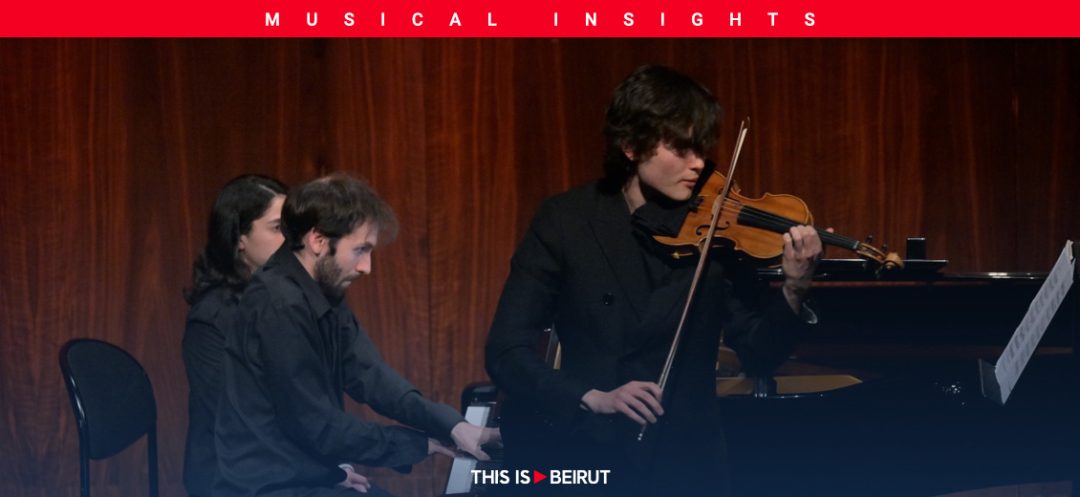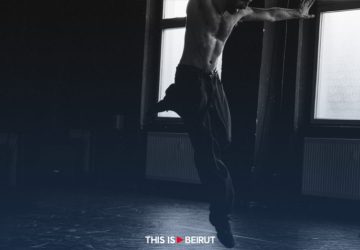Listen to the article
Could the Al-Bustan Festival be reviving the golden age of great maestros in Baalbeck? Kantorow and Lozakovich, two young but eminent virtuosos, treated the Lebanese audience to an intense evening with interpretations worthy of the great masters, ranging from Schumann to Franck, evoking the spirit of legends such as Richter and Oistrakh.
Are we, by any chance, back to the age of enlightenment in Lebanon where Charles Munch (in 1957), Fernando Previtali (in 1957) or even Herbert von Karajan (in 1968) masterfully conducted the most eminent orchestras at the Baalbeck Festival? Or are we reliving the luminous performances of Sviatoslav Richter or Mstislav Rostropovitch, who transported Lebanese music lovers to a world of poignant sensations in 1969, with the Gewandhaus Orchestra of Leipzig, under the majestic direction of Kurt Masur? Or are we talking about the legendary concerts of Karlheinz Stockhausen (in 1969) or Gilbert Amy (in 1971) held in the Jeita grotto? Perhaps yes, perhaps no. Let us dream nevertheless, as long as it is still allowed. Who knows? Because if Lebanon’s musical history has experienced glorious episodes, the Al-Bustan Festival has undertaken the noble mission of distilling new moments of musical greatness.
Undeniable Virtuosity
The concert on Sunday, March 10, was evidently part of it. One could hardly expect less, especially since the protagonists of this evening are none other than French pianist Alexandre Kantorow and Swedish violinist Daniel Lozakovich. Despite their young age, their undeniable virtuosity places them among the greats. Indeed, the pianist was recently honored at the Victoires de la musique classique as an instrumental soloist. As for the violinist, whose name has been associated with the prestigious record label Deutsche Grammophon since the age of 15, he remains the protege of maestro Valery Gergiev. That said, it is time to get to the point. It’s exactly eight o’clock, the two artists take the stage. As soon as they place their fingers on their instruments to begin the interpretation of Edvard Grieg’s (1843-1907) Sonata for Violin and Piano No. 3 in C minor, Op. 45, they transform into the virtuosos that Lebanon celebrates tonight.
Golden Age
The work opens with a bold, dark, dramatic theme. The swirling violin traces undulating melodic lines while the piano hammers accented chords. Lozakovich reigns supreme from the first to the last note, smoothly transitioning from one octave to another. His technique clearly demonstrates a musical awareness enriched by a mastery of the bow, worthy of the great violinists of the golden age. Everything is imposing, precise and brightly clear in this first movement, Allegro molto ed appassionato. The second movement, slow and lyrical, marked Allegretto espressivo alla Romanza, offers a welcome respite after the preceding fervor. The tranquility of the long piano introduction is however disturbed by the noise of latecomers taking their seats. Kantorow sculpts his phrasing with a delicacy and a sonority devoid of any heaviness, creating magnificent contrasts between shadow and light. A dancing atmosphere immediately sets in with the first theme of the final movement, Allegro animato. Faced with this virile ruggedness, a moving melodic sweetness emerges, where the two performers reach peaks of emotion bordering on ecstasy.
The Spirit of Schumann
After this brilliant interpretation of Grieg’s sonata, attention now turns to Robert Schumann’s (1810-1856) Sonata for Violin and Piano No. 1 in A minor, Op. 105. The composer reportedly expressed dissatisfaction with his work, stating, “I didn’t like the first sonata, that’s why I made a second one, which I hope will be better.” And yet this piece is imbued with the Schumannian spirit, the same ferment found in his Piano Concerto in A minor, Op. 54. The duo highlights its narrative eloquence by delicately shaping a personal interpretation, but one intimately faithful to the score. Lozakovich confidently advances in the first movement, marked by passionate expression, a luminous darkness, one might say. The two instrumentalists demonstrate a symbiotic complicity, evoking a delightful emotional instability, tinged with apprehension in the second movement. They then launch into a cascade of crystalline rapid notes, punctuated by moments of amorous lyricism, in the third movement, concluding with passionate and captivating declarations.
Solemnity and Passion
Following a 20-minute intermission, the duo tackles Cesar Franck’s (1822-1870) Sonata for Violin and Piano in A major FWV 8. This work can be approached in two different ways: with virtuosity and solemnity or with passion (as in the interpretation of David Oistrakh and Lev Oborin). The duo positions itself between these two approaches. After a well-measured first movement Allegretto ben moderato, Kantorow unleashes the storm with his swirling momentum while Lozakovich engages in a jerky melodic line in accordance with Franck’s intention. The duo reveals great finesse in the lyrical and contemplative interludes, where one can admire their ability to maintain constant and flawless fluidity in their interpretation. It will be necessary to wait until the sunny fourth and final movement, Allegretto poco mosso, offers contrast with the tormented theme of the second movement, Allegro. A masterpiece of interpretation.
While the program previously announced by the festival included Claude Debussy’s (1862-1918) Sonata for Violin and Piano CD 148, the duo concludes the evening with the Scherzo from the Sonata F-A-E, jointly composed by Robert Schumann, Johannes Brahms (1833-1897) and Albert Hermann Dietrich (1829-1908). However, the Scherzo, with its Beethovenian colors, was indeed written by Brahms. It is difficult to express the interpretation of the young duo, except by asserting that it is not a simple interpretation but rather a revelation of the ineffable. Grandiose. Under a thunderous applause, the musicians treat their audience to two encores: the nostalgic Liebeslied (Love’s Sorrow) by Fritz Kreisler (1875-1962) and an arrangement (non-essential) of Les Feuilles Mortes, a piece originally composed by Joseph Kosma (1905-1969).









